Firefighters Save Animals They Thought Were Puppies, Only to Discover Something Else Entirely
When most people think of firefighters, they think of brave men and women running into burning houses to save whoever’s inside. Although that’s a big part of what they do, it’s not everything.
Alongside that, they also make animal rescues. Although not as action-packed as fighting fires, these little rescues are highly rewarding—and surprising. The Colorado firefighters below learned about those surprises and rewards firsthand.
Day in the Life of a Firefighter
Colorado Springs is a city of nearly 480,000 people in central Colorado. In March 2018, the firefighters were going about their business as usual—sweeping, mopping, and cleaning the fire trucks—while keeping an ear out for any emergency calls.
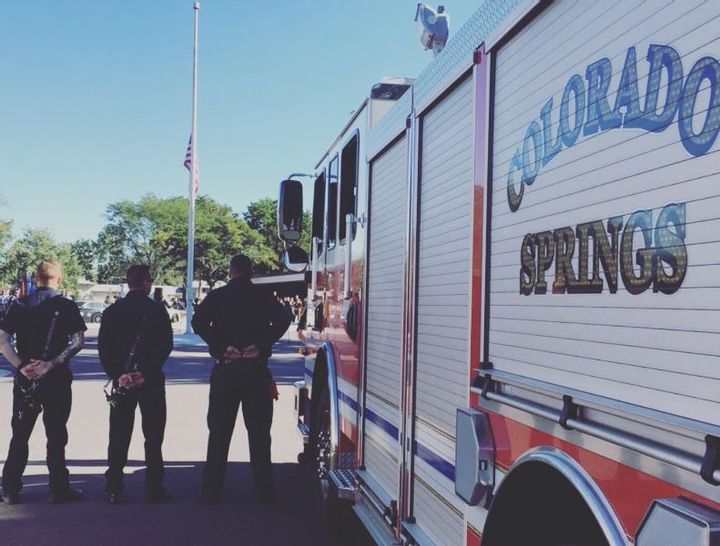
Source: @CSFDPIO/Twitter
For many firefighters, work is a mix of tedium and intense action. One minute you’re waiting around for something to happen, and the next, you’re zooming off to a burning building or medical emergency. On this day, however, the Colorado Springs Fire Department (CSFD) wasn’t expecting anything crazy to happen.
An Experienced Department
Even if something crazy did happen, the CSFD crew was sure it wouldn’t surprise them. Many crew members had years of experience and saw everything from forest fires to people trapped in floods. If it was an emergency, they were prepared for it and knew what to do.

Source: nerami30/Pixabay
They also knew that a quiet morning was no guarantee of a quiet afternoon. All it took was one distressed call to change everything. One call could cause them to put their lives on the line.
A Distressed Animal
Suddenly, the station phone rang. A CSFD member picked it up, and others waited nearby to see what it was all about. On the other end was a woman. She said a trapped animal was stuck nearby and needed some help.

Source: Andre Benz/Unsplash
The firefighter said “Ok” and hung up. They only knew the basics: an animal was trapped. What kind of animal or how badly they were trapped? No idea. Regardless, the crew strapped on their gear, jumped into the truck, and drove out to the scene.
Ready to Go
When the woman on the phone gave them an address, they checked to see if it was within city limits. It was. So, they drove over assuming it would be a relatively straightforward rescue mission: something like a curious cat who scrambled too high up the telephone poll.
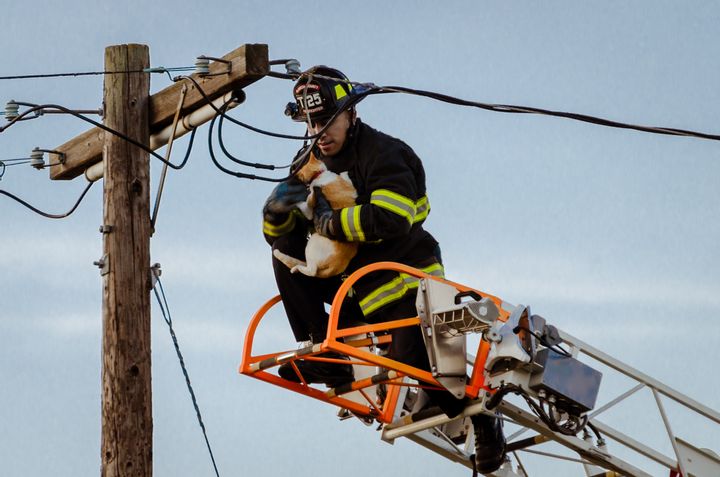
Source: Chris Briggs/Unsplash
However, it also wasn’t out of the realm of possibility for another kind of cat—say a wild mountain lion—to be the one needing help. If that were the case, they would have to approach the rescue very differently.
A Fresh Approach
The crew had plenty of experience dealing with trapped and distressed animals. Most of the time, it was a small puppy or kitten stuck somewhere it shouldn’t have been. Although – for them – it was an old routine, they approached each new distressed animal call with a fresh approach.
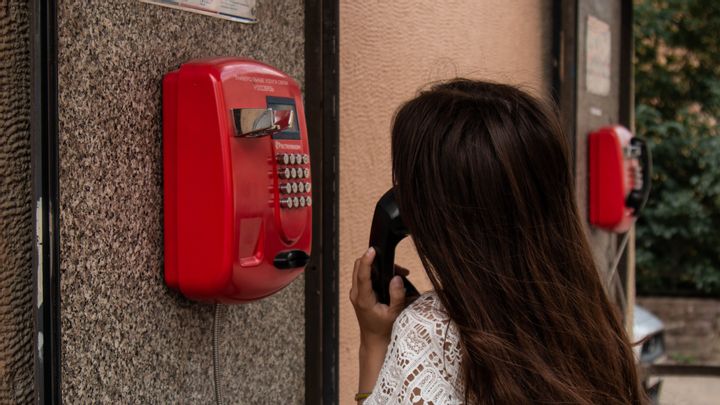
Source: andy-art-LGylxAvpl3k/Unsplash
In this particular situation, they had no idea what they were facing. The woman who called them over had no details about the type of animal involved. So, the crew made sure to take precautions.
Hearing but Not Seeing
Shortly after arriving on the scene, they learned more details. It turns out that the distressed animal was trapped on the other end of a storm drain. They could hear its whimpering cries.
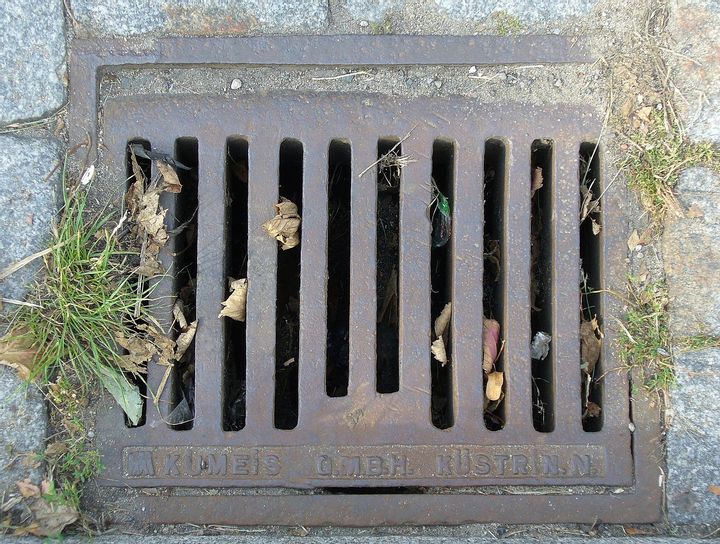
Source: Pudelek/Wikipedia
Although the situation was familiar to the crew, they couldn’t see the animal directly, so they still didn’t know if it was a domestic or wild animal trapped. Lucky for them, the weather was gorgeous. They didn’t have to battle a rainstorm and the threat of the unknown animal drowning.
Carefully Lifting the Lid
Although they didn’t have to battle with poor weather conditions, that doesn’t mean the firefighters were home scot-free. They still assessed the situation properly and carefully took off the lid. Inside, the storm drain was quite dark and very small.
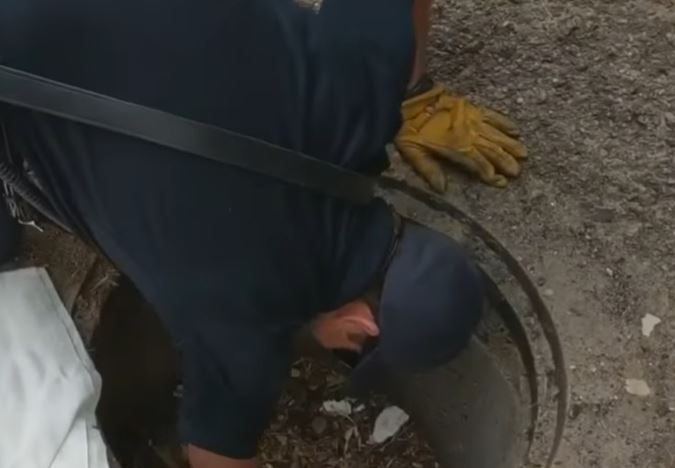
Source: CBS Denver/Youtube
They were unlikely to find a full-grown mountain lion or bear in such a small space which was a relief. Most likely, the whimpers were from a newborn animal (or animals) left alone in the dark. A CSFD member carefully moved his hand around to feel for life.
Tiny Cries
The animal cries certainly seemed distressed, so the crew knew there was no time for dilly-dallying. They had to act now. Luckily, it being a familiar situation, they knew what to do. Step one: open the storm drain.

Source: jesse orrico/Unsplash
After that, they looked inside. In the past, when they did similar rescues, the face of a kitten or puppy usually jumped out at them. This time, however, it didn’t. Nothing jumped up. That’s because these creatures were so young that all they could do was cry.
Confusion at First
If a cat gets stuck in a tall tree, it’s fairly easy to figure out what happened. Usually, the cat ran up a tree to chase or evade something. Then, it got stuck and meowed for help.

Source: Valentin Lacoste/Unsplash
This situation for these newborns, however, was far more confusing. How did they end up down the drain? Would a cat or dog give birth in such a small, damp place? It seemed unlikely. Although these questions popped up, the CSFD crew pushed them aside to focus on the rescue mission first.
Where’s Mom?
Immediately upon pulling them out of the storm drain, the firefighters recognized that the animals were very young—only a few hours to a few days old. At such a vulnerable time in their life, it was crucial to find the mother and reunite them. There was no way these newborns could survive on their own.
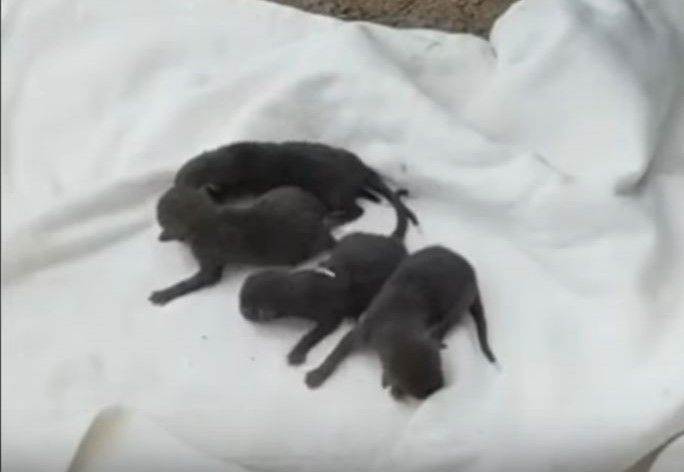
Source: CBS Denver/Youtube
Furthermore, finding the mother would help the crew understand what kind of animals they were. Unfortunately, after looking around, they turned up empty-handed: no mother in sight.
Finding a Home
Although the CSFD crew—just like firefighters nationwide—deal with highly distressing situations regularly, that doesn’t mean they’re completely desensitized or devoid of emotions. In fact, quite the opposite.
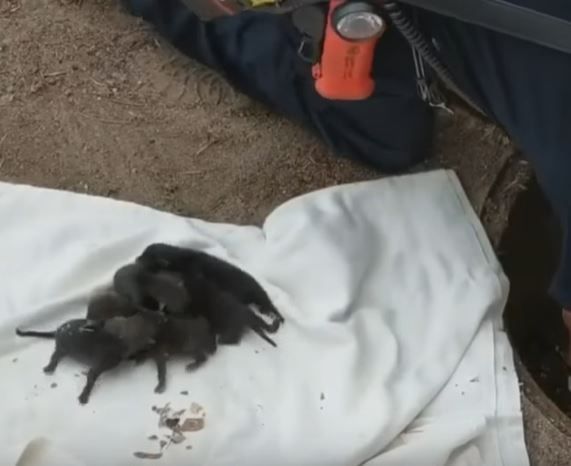
Source: CBS Denver/Youtube
Often, crews can find themselves welled up with emotions. That was certainly the case after finding the newborns in the drain. The firefighters felt it was only right to find out what happened. They wanted to give them a chance at life by providing a home. However, that was far easier said than done.
No Easy Decision
The crew knew very little about these newborn lives, and the fact that they didn’t share a mutual language made it much harder. Would the mother come back in a few minutes? Or was she gone for good? It was hard to get a definitive answer to either question.
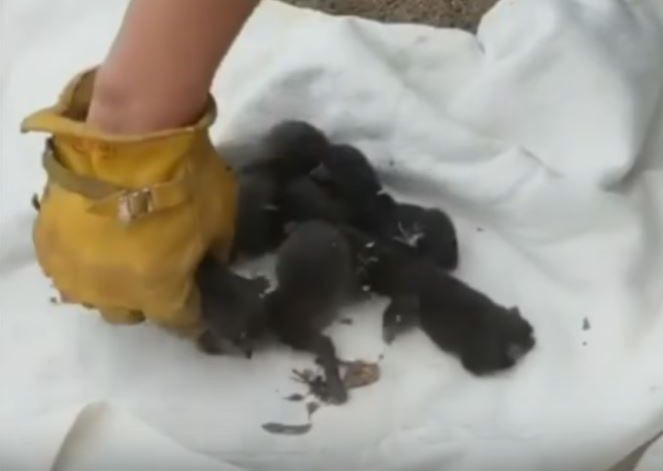
Source: CBS Denver/Youtube
If mom was hiding somewhere nearby in the bushes, taking the kids away could be devastating. On the other hand, if the mom wasn’t coming back, then it would be equally devastating to leave the newborns there.
Domestic or Wild?
One of the biggest dilemmas the firefighters faced was the whether these animals were domestic or wild. They had no idea what species they belonged to – and, therefore – no idea what their specific needs were.
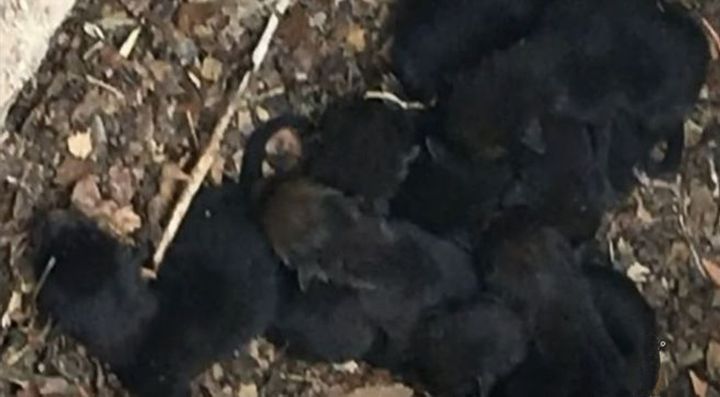
Source: CBS Denver/Youtube
A domestic dog has far different needs than a wild hog. For the former, it’s best to provide immediate help. For the latter, the same kind of well-meaning help might adversely affect their development. For example, it could lower their ability to survive in the wild.
Abandoned Puppies?
As the crew knelt to look at the newborns in more detail, they began to see a familiar set of bones and fur. Most of the firefighters were pretty sure that these whimpering newborns left in a storm drain were puppy dogs.
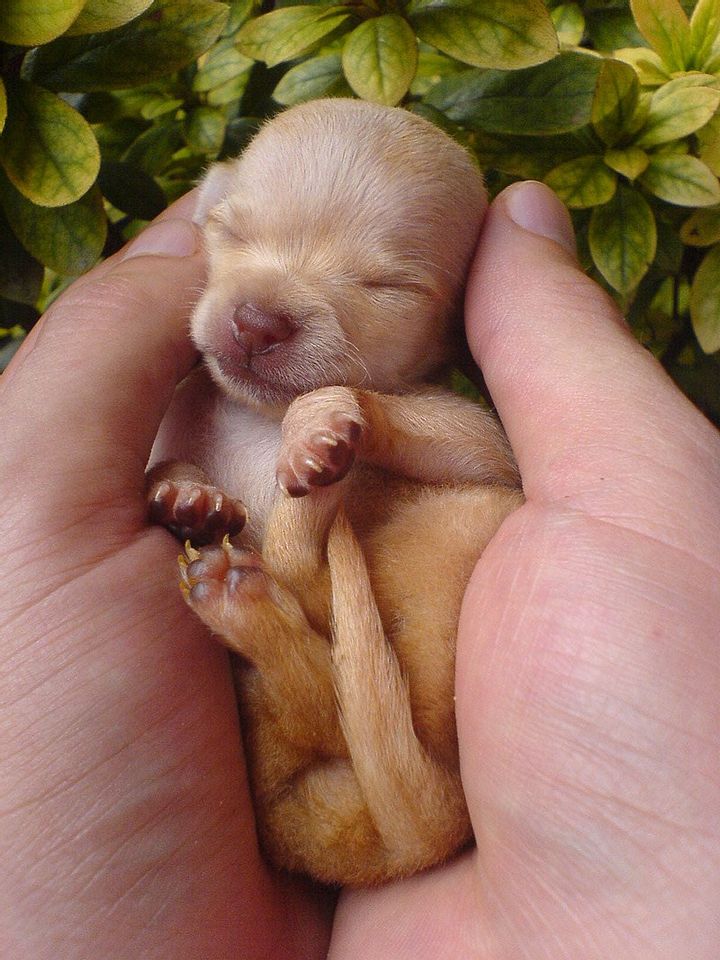
Source: Toronja Azul/Wikipedia
Although that solved the identity issues, it made the other issue more confusing: why were the puppies left in the storm drain? There was no simple answer. However, there was an uncomfortable possibility that left their hearts enraged.
Investigating a Hunch
That uncomfortable possibility was human cruelty. Maybe the pup’s owner couldn’t afford them, couldn’t adopt them, or was simply cruel and decided to put them in a storm drain. Although they had a hunch that this might be the case, they wanted to investigate further to see if it was correct.

Source: copperfeesh/Wikipedia
So, they contacted the woman who initially called the station to let them know about the trapped animals. She said that (as far as she knew) no humans put the pups down the drain. Phew!
Animal Experts Take Over
Later on, Brian Vaughan, the captain of the CSFD crew, was interviewed on Inside Edition. According to him, the rescue mission took about 20 minutes. Right after the rescue, their minds turned to the possibility of a dog dumping.
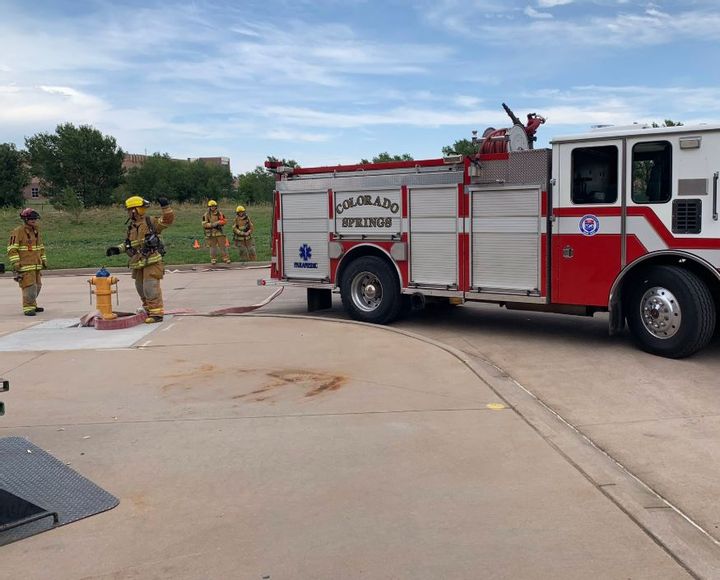
Source: @CSFDPIO/Twitter
Although obviously saddened, there wasn’t much they could do to save the pups. Raising them on-site at a busy fire station was unrealistic. So, they handed over the small pups to animal experts who knew how to properly care for them. Shortly after, they learned something astonishing.
Pups Warm Themselves Up
As noted before, the weather was mild in late March when the CSFD crew showed up at the storm drain to hear the whimpering cries of small pups. Although the temps were warm outside the drain, they were cold and damp inside. As a result, the pups were freezing.

Source: Wikipedia
It was essential to warm them up right away. The crew knew that, but so did the pups. Once they were out of the drain, they immediately piled on each other to warm up.
Guessing the Breed
Despite having a huge breadth of dog-rescuing experience to draw upon, the crew was unable to pinpoint what kind of dogs these were. They looked like nothing else they’d seen before. The fact that the pups had been left in a damp storm drain also didn’t help.
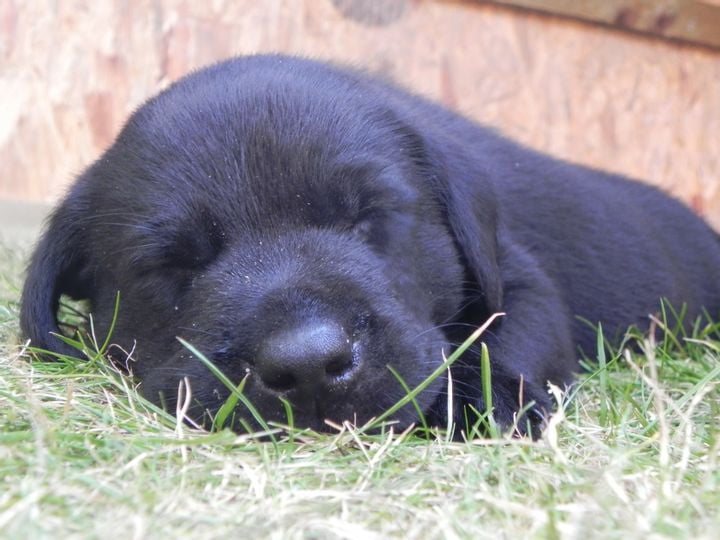
Source: PublicDomainPictures/Pixabay
Eventually, the firefighters decided that the pups must have been young black Labradors. Given the color of their fur and facial structure, it was an understandable guess. However, understandable guesses don’t always turn out to be correct.
The Humane Society Steps In
So, after concluding that the rescued newborns were pups and black Labs, the CSFD crew took them to The Humane Society of the Pikes Peak Region. With loads of experience caring for dogs, cats, pigs, rats, and the occasional chicken, the Humane Society would know what to do.

Source: The Humane Society of the United States/Facebook
In this case, however, they couldn’t do much. That’s because this branch of the Humane Society wasn’t licensed to care for the kind of rescued newborns that the firefighters brought them.
Shocking News
Although the firefighters didn’t forget about the rescued pups, they didn’t have them at the forefront of their minds, either. After the crew made it back to the station, they continued life as usual. Then the phone rang—it was a vet from The Humane Society.
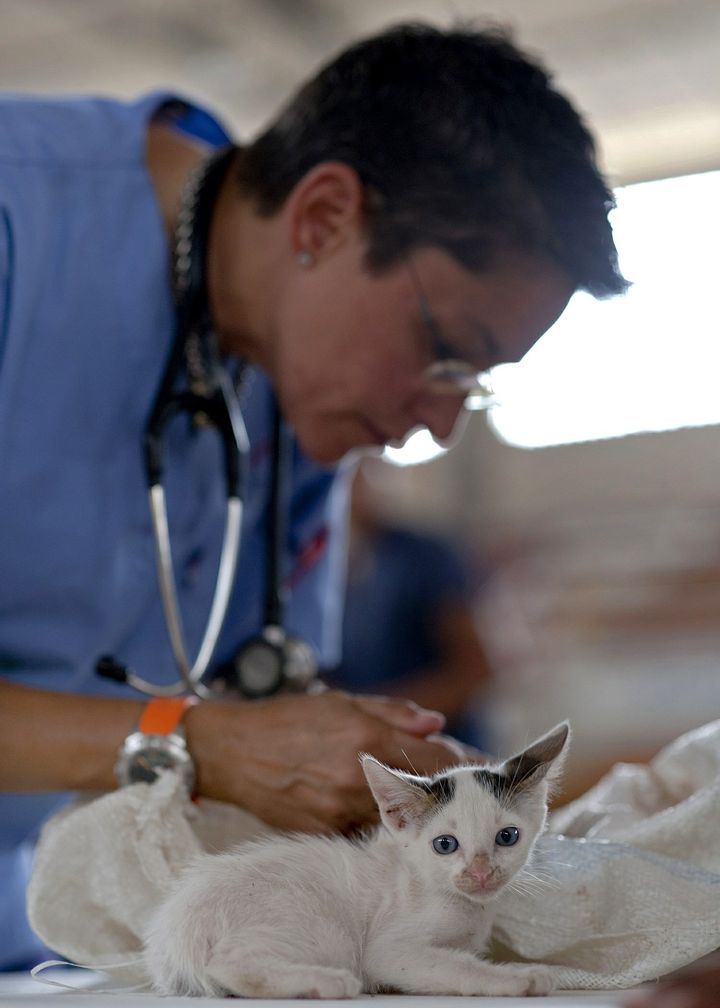
Source: skeeze/Pixabay
The firefighters braced for the bad news that the little pups didn’t survive. That bad news never came because the “pups” were doing just fine. The vet, however, had a bit of shocking news to tell the CSFD crew.
Mistaken Identity
Since the firefighters weren’t trained veterinarians, they had limited experience with different kinds of animals. Based on that experience, they made an educated guess about what kind of newborns they rescued from the storm drain. That guess, however, turned out to be wrong.
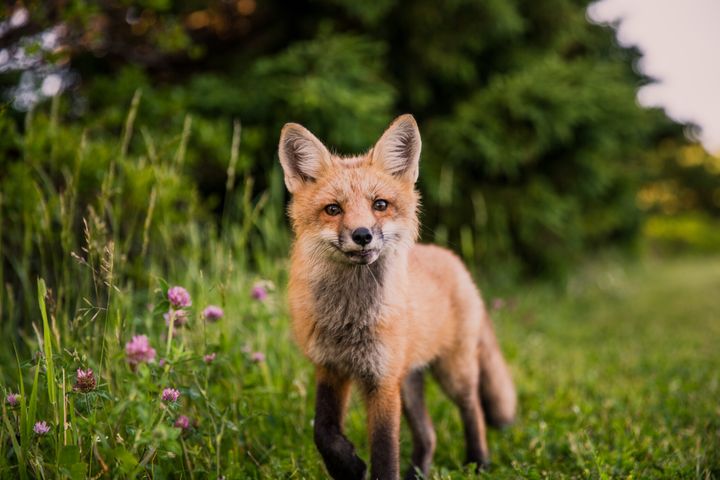
Source: Scott Walsh/Unsplash
The eight “pups” weren’t black Labradors at all. Heck, they weren’t even dogs! Instead, the “pups” were young red foxes, known as “kits.” At such a young age, dogs and foxes look very similar, so it was an easy mistake to make.
Needing a New Home
The reason the Humane Society of the Pikes Peak Region couldn’t do much for the rescued newborns is that they’re only licensed to deal with domestic animals such as cats and dogs. Wild animals like baby foxes are beyond their purview.
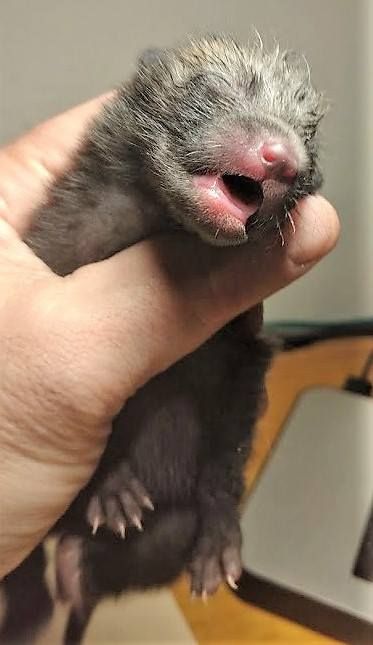
Source: The Animal Clinic of Woodland Park/Facebook
However, being well-integrated into the local community, the Humane Society had contacts with licensed wildlife rehabilitators. Also, being an organization full of people concerned with animal welfare, the Humane Society wanted to help these precious and vulnerable kits grow into adult foxes.
2-Day-Old Foxes
So, they called the Animal Clinic of Woodland Park (a nearby town) to see if they could care for the baby foxes. Luckily, they could. When Terri Collins, co-owner of the animal clinic, took a look at the kits, she said they were only a day or two old.
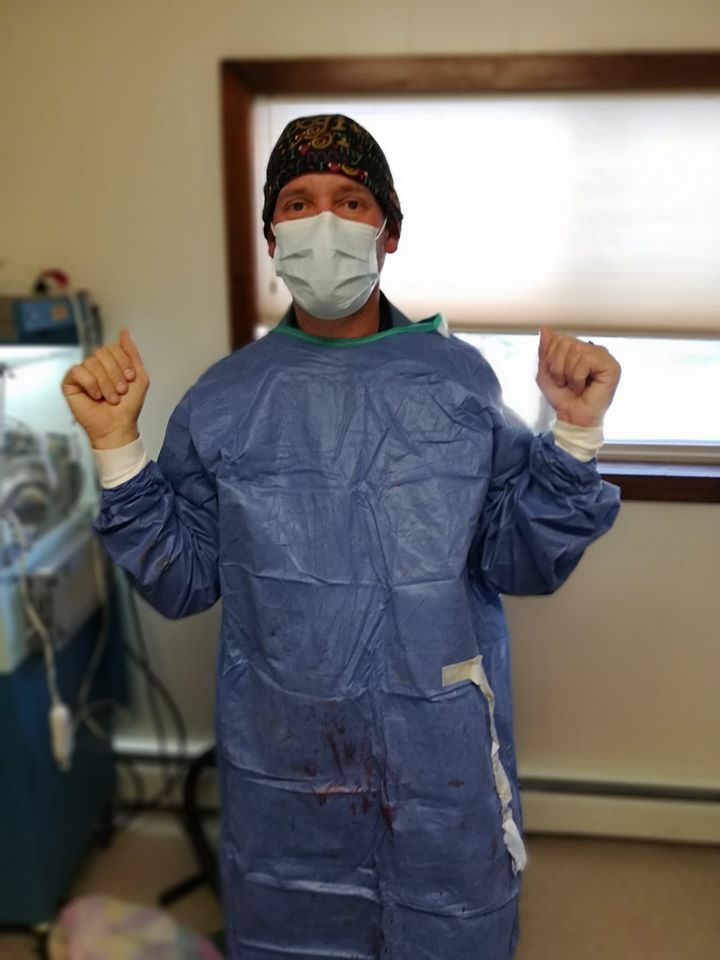
Source: The Animal Clinic of Woodland Park/Facebook
The kits were so young that their eyes hadn’t opened yet! It was satisfying to give the baby foxes the care and attention they deserved. That being said, the animal clinic wouldn’t be their permanent home.
Facebook Challenge
It turns out the CSFD crew weren’t the only ones baffled by the rescued animals’ identity. Shortly after receiving the kits from the Humane Society, Terri Collins posted a photo of them on her Facebook page. Then, she asked friends and family to guess what species they were.
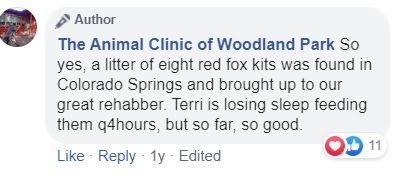
Source: The Animal Clinic of Woodland Park/Facebook
No one got it right! It seems everyone was confused. After a few minutes of guessing, Collins finally revealed that the mysterious creatures brought to her clinic were young foxes. Also, the foxes required four hours of feeding.
Not So Unusual
How did these young foxes end up in an urban area? The firefighters and others were puzzled, but Travis Sauder, the Colorado Parks and Wildlife District wildlife manager, said that it wasn’t out of the ordinary.
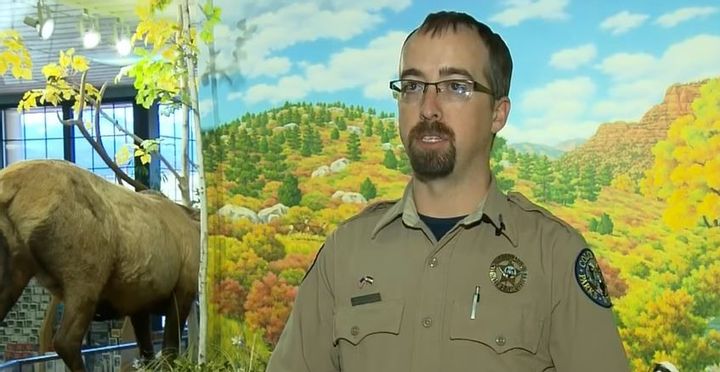
Source: CBS Denver/Youtube
The early part of the year is mating season for many red foxes. After a gestation period of 50 or so days, most give birth between March and May. Furthermore, they love to use small dens for their young, which explains the eight kits in the storm drain.
Always Learning
Although the Colorado Springs Fire Department is full of experienced firefighters, their rescue of eight young red foxes made them realize there’s always more to learn. Firefighting is a job that never stops surprising you.
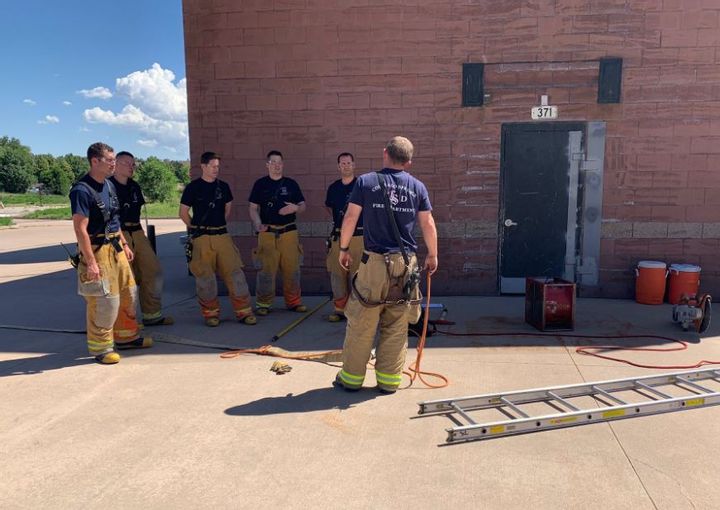
Source: @CSFDPIO/Twitter
Before the fox rescue, the CSFD crew only knew about helping domestic animals like cats and dogs. Now, they know what to do when they encounter wild animals. Furthermore, it feels good to save the kits from the terrible fate of being abandoned in a storm drain.
The Limits of Human Care
When Terri Collins first got a hold of the young red foxes, she spent all day and night caring for them. In addition to four hours of feeding, she looked over them to ensure they were safe.

Source: Sebastian Molina fotografía/Unsplash
During that time, however, she came to understand her own limits. As a human, she couldn’t care for the baby foxes as well as a mother fox could. She knew that, somehow, she had to find their mother.
A Reuniting Attempt
Both Collins at the animal clinic and Sauder at the Colorado Parks and Wildlife District knew that reuniting the kits with their mum was the right thing to do. So, they returned them to where they were found.
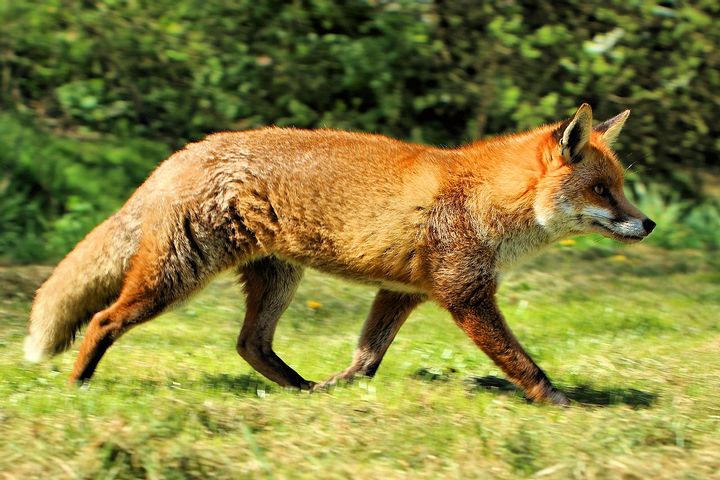
Source: Flickr
Of course, they monitored the area to check if the mom came back. If it turned out the mom left for one reason or another, Sauder and Collins would come back, pick them up, and find a suitable wildlife rehabilitation center for them to go to.
Community Lessons
Although the foxes’ ultimate fate is unknown, plenty of generous people helped in their rescue mission along the way. These include the woman who made the initial call, the CSFD crew, the Humane Society, Terri Collins, and Travis Sauder.
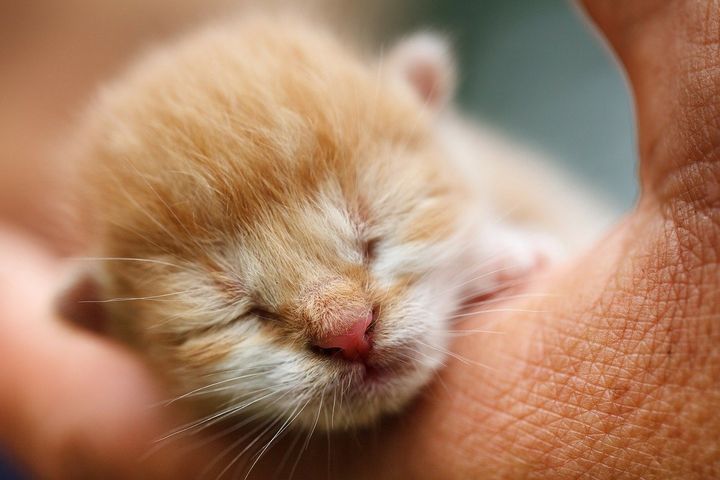
Source: PublicDomainPictures/Pixabay
Readers can take a lot from this inspiring example of community collaboration. First, you can play a part in protecting wildlife simply by making a phone call. Second, it’s best to defer to experts if dealing with distressed animals.
